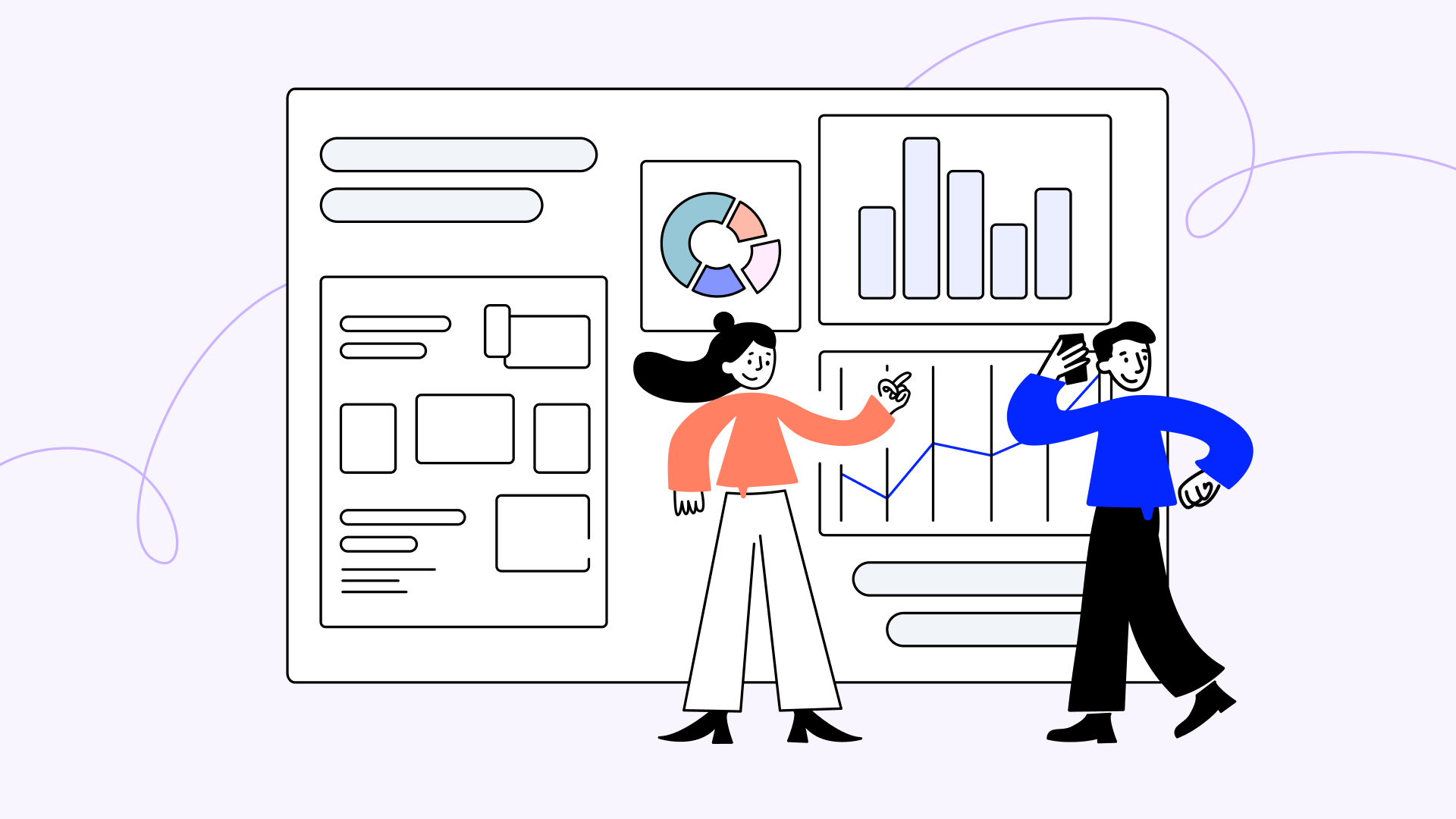
With cloud-based call center technologies now incorporating automation, integration, and analysis, there’s a lot to wade through to find out what’s best for your business, for both sales and customer support.
As much as there is to learn and understand about your business needs, and the options you have to optimize your call center performance, you don’t have to figure it all out yourself (or shop around for each separate solution).
In this article, you’ll learn about the most important call center technologies today, including AI-driven analytics to improve team productivity, minimize human error, reduce your call abandonment rate, speed up response times, and enhance the customer experience.
Find the features that are best for your business with a free demo.
A Breakdown of Need-to-know Terms
Automation – Dial outbound calls, leave pre-recorded voicemails, or arrange a callback all with call center solutions that eliminate repetitive, inefficient manual processes that are prone to human error.
Integration – Your sales, customer relationship management (CRM), and call center software can share a constant flow of information that enhances collaboration and efficiency. This integration gives agents a clear picture of what conversations have occurred in the past. Additionally, collecting information from email, SMS, messaging apps, phone calls, and social media channels can improve sales targeting and inform agents on likely topics of conversation.
Analysis – Analytics including complex metric modeling and thousands of data points can now be performed virtually instantly. You can see common areas of interest or pain points for customers and call center agents, while your team can gauge a caller’s mood in real-time and adjust their tone or topic accordingly.
The Top 5 Call Center Technologies That Give You an Edge
#1: Voice Over Internet Protocol (VoIP)
VoIP is one of the biggest game-changers in call center technology – because you don’t need a physical call center. VoIP is cloud-based, meaning your agents can make and take calls anywhere there’s an internet connection.
It might sound like the WiFi calling option on your cell phone, but there’s a whole lot more to it than that. Use a VoIP phone system to streamline processes, increase security, and enjoy near-endless scalability as your business grows.
For example, if you join the likes of Mercedes-Benz, Revolut, and DHL using CloudTalk VoIP, you can call and take calls from over 160 countries, end-to-end encrypted, with clear call quality, which lowers the call abandonment rate. If those international customers need to call you, you can provide a local number so they don’t have to pay a premium.
Benefits:
For your business
Reduce costs and increase operational efficiency – with global reach. Plus, agents can make calls from the comfort of wherever there’s a strong Wi-Fi signal, which increases employee satisfaction.
For your customer
Better call quality, which improves the overall customer experience. International customers will also be happy because they can call for you less. Last, integrations with other platforms can improve your chances of creating a lead, making a sale, or resolving an issue.
#2: Call Queuing, Interactive Voice Response (IVR) & Automatic Call Distribution (ACD)
Imagine a world where the first person a customer encounters is an agent from the right department, well-versed in their business needs or specific issue. This is what call queuing, IVR, and ACD do.
Fully customizable call queuing software lets you distribute incoming calls to the right agents, based on customer status or the technical expertise of individual agents. It’s IVR’s job to guide the customer, while ACD makes the connections.
Acting like a telephone operator, IVR greets callers and asks them the right questions. ACD takes that information and decides on the agent that best suits their needs. All without putting them on hold or sending them around different departments that might be able to help.
This approach to call routing is ideal for sales channels where customers are close to buying your product or service but want additional information before pulling the trigger on a purchase. For customer service on the other hand, potentially frustrated customers can be connected with the expert they need, having already established the core issue. Some challenges can even be resolved through self-service with the right menu options and IVR recommendations.
Furthermore, in tandem with VoIP, these technologies can connect customers with specialists in their home country without dealing with endless hold music or redirections. CloudTalk’s ACD solution, for instance, can save up to three minutes per call which, when you’re on hold, can feel like a lifetime.
Benefits:
For your business
Save time and operational costs. Assign agents to customers who will most benefit from their expertise. Increase customer satisfaction, resulting in more sales and better retention, because of fewer dropped calls and less time on hold.
For your customer
More customer satisfaction as they’ll feel confident the person they first speak to will be able to assist them and address their needs. Plus, their overall customer journey will be shorter and more frictionless.
#3: Call Recording & Transcription
“Learn continually, there’s always one more thing to learn”. That’s what Steve Jobs said. And it applies to business practices as much as personal development. It does, of course, help if you have tools and information from which to learn. That’s where scratching the surface of call recording and transcription can pay dividends.
To start, it’s a very easy process to activate and manage. For example, CloudTalk’s call recording software generates transcripts and MP3 files, before delivering them directly to the inbox of your choice.
Call recording plays a key role in quality control, resolving misunderstandings, and, in worst-case scenarios, protecting from lawsuits. Being able to pinpoint the part of the conversation in question and play it back eliminates doubt, ensuring a swift, appropriate response.
Agent training is another common use of call recordings, again focusing on the individual call. Asking “What did they say that closed (or lost) that sale?” or “What was the crucial question that helped the customer explain their issue?” is essential for your call center’s ongoing improvement.
In conjunction with the right analytics tools, you can turn your recordings and transcripts into a goldmine of information. Discover which key phrases convert into the most sales and adapt your scripts and strategy accordingly, find out your customer’s biggest pain points, and see if they can be addressed more effectively within your product or online.
Benefits:
For your business
Better strategic insights as you’ll get a holistic view of performance that’ll help streamline, adapt, and improve business behaviors. Plus, call recording and transcription provides protection against potential accusations and material for future training.
For your customer
Just like your agents, they’ll have the peace of mind that their inquiry is on the record, so any misunderstandings can be dealt with easily and they receive more joined-up support. Over time, they’ll receive sales service that’s more suited to their wants and needs. They’ll also be able to find effective resolutions to any issues they encounter.
#4: CRM Integration
Your business is probably collecting, processing, and analyzing customer data through CRM software. Without this, you’re not managing your customer relationships effectively.
Note: You can integrate CloudTalk with multiple CRM platforms, including Zendesk, HubSpot, Salesforce, and Pipedrive, to collate data, streamline workflows, and minimize manual tasks.
Integrating your CRM with your call center tech stack enhances your team’s productivity and makes it easier for agents to communicate with your customers.
For example, your agents will know who they’re talking to, where they’re based, and their purchase history. Also, they’ll be able to access a record of customer interactions across all your communications channels, including any previous calls, emails, messages, and even social media.
This seamless integration allows agents to focus on conversations without toggling between systems. With all interactions at their fingertips, they can quickly understand customer needs and behavior, saving time and improving customer satisfaction.
Benefits:
For your business
Reduce call times, save money, and increase productivity. Help agents work more quickly and constructively while helping customers, leading to more sales and solutions.
For your customer
A common pain point for customers is having to repeat themselves – and with an effective CRM integration, they won’t have to. Instead, they’ll feel listened to and positive about the experience.
#5: Analytics
Advanced analytics allow you to generate reports out of historical data related to everything from call activity to staffing levels, so you can improve your approach to workforce management and make better-informed business decisions. All from a single platform, eliminating the need for IT support, external software, or outsourcing development.
Some platforms, including CloudTalk’s contact center software, feature a real-time dashboard that lets you monitor active calls, queues, agent status, and more.
This lets center managers monitor agent performance, know if they need to reallocate resources, or offer additional support. The latest advancements in artificial intelligence (AI) mean agents can use sentiment analysis to see the mood or interest levels of the customer in real-time, then adjust their tone or subject matter accordingly.
Benefits:
For your business
Micro and macro representations of your business at any given moment, paving the way for well-informed team management and strategic adjustments.
For your customer
Reallocation of resources to cut wait times improves the customer experience, as does communication that puts their wants and needs first.
What Does it Mean for You Now?
As it stands, the average call center agent spends over 31 minutes of every working hour talking to customers, just a little over 50%. By embracing call and contact center technology like those we outlined in this article, your agents can work more productively and hit the benchmark of spending 85% of their working hours on calls.
Omnichannel solutions like CloudTalk mean you can pick and choose which features you want to use and manage them from a single interface. A combination of the technologies we covered above, tailored to your business needs, allows remote working on a global scale, shorter call times, and more visibility of what’s working.
What Does the Future Hold?
The rapid development of AI technology over the last few years has caused a seismic shift in every industry from medicine to manufacturing, agriculture to education, and customer relations to commerce.
By embracing CloudTalk’s easy-to-use AI call center technology, you can improve your team’s output, enhance the customer experience, and better scale your operations. You’ll also have the infrastructure in place to seamlessly integrate new features as they come to market.
Meanwhile, the evolution of chatbots into virtual agents using natural language processing and conversational AI to better interact with customers is a key development to watch. They’ll improve at sales conversion and issue resolution, but customers will still call, message, or email. It just means that when they do, they will have very specific needs, and your call center agents must be armed with the knowledge they need.
Additionally, expect increasingly accurate predictions of who (and how) to approach for near-guaranteed sales. For customer service, AI will continue to advance in pre-empting issues and offering agents solutions.
See what CloudTalk can do for your call center performance.
Try it free and get expert guidance.
















